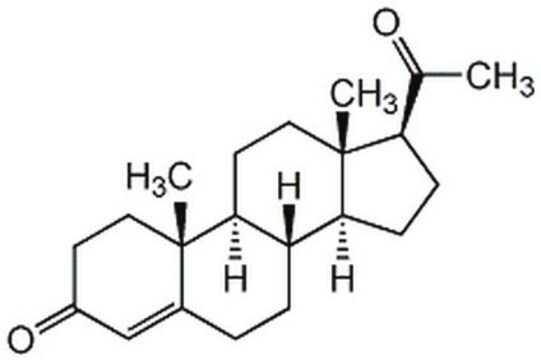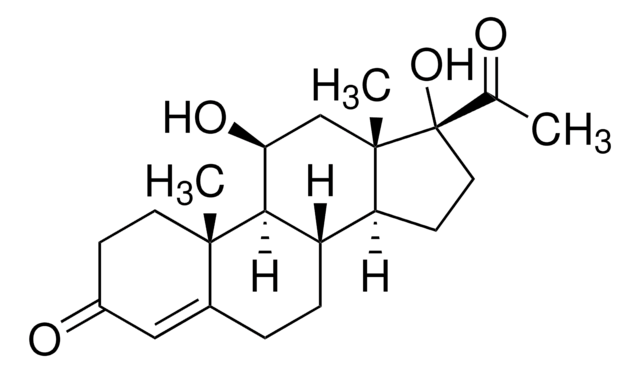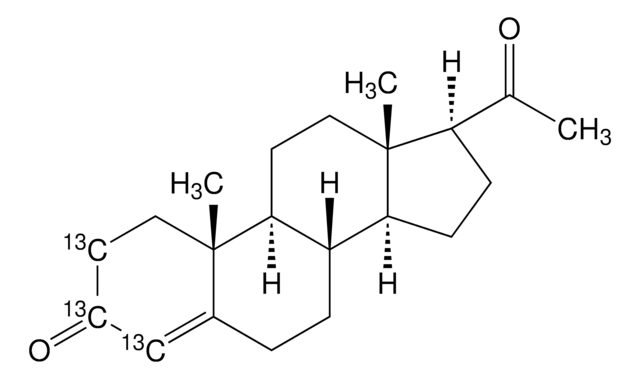Kluczowe dokumenty
P3972
Progesterone
meets USP testing specifications
Synonim(y):
4-Pregnene-3,20-dione
About This Item
Polecane produkty
agency
USP/NF
meets USP testing specifications
Próba
≥97%
Formularz
solid
mp
128-132 °C (lit.)
Zastosowanie
pharmaceutical (small molecule)
ciąg SMILES
CC(=O)[C@H]1CC[C@H]2[C@@H]3CCC4=CC(=O)CC[C@]4(C)[C@H]3CC[C@]12C
InChI
1S/C21H30O2/c1-13(22)17-6-7-18-16-5-4-14-12-15(23)8-10-20(14,2)19(16)9-11-21(17,18)3/h12,16-19H,4-11H2,1-3H3/t16-,17+,18-,19-,20-,21+/m0/s1
Klucz InChI
RJKFOVLPORLFTN-LEKSSAKUSA-N
informacje o genach
human ... ABCB1(5243) , AR(367) , CYP2C9(1559) , EBP(10682) , ESR1(2099) , ESR2(2100) , NR3C1(2908) , NR3C2(4306) , PGR(5241) , SERPINA6(866)
mouse ... Esr1(13982)
rat ... Ar(24208) , Nr3c1(24413) , Pgr(25154)
Szukasz podobnych produktów? Odwiedź Przewodnik dotyczący porównywania produktów
Działania biochem./fizjol.
Inne uwagi
produkt powiązany
Hasło ostrzegawcze
Danger
Zwroty wskazujące rodzaj zagrożenia
Zwroty wskazujące środki ostrożności
Klasyfikacja zagrożeń
Carc. 2 - Lact. - Repr. 1A
Kod klasy składowania
6.1C - Combustible acute toxic Cat.3 / toxic compounds or compounds which causing chronic effects
Klasa zagrożenia wodnego (WGK)
WGK 3
Temperatura zapłonu (°F)
Not applicable
Temperatura zapłonu (°C)
Not applicable
Środki ochrony indywidualnej
Eyeshields, Gloves, type P3 (EN 143) respirator cartridges
Wybierz jedną z najnowszych wersji:
Masz już ten produkt?
Dokumenty związane z niedawno zakupionymi produktami zostały zamieszczone w Bibliotece dokumentów.
Klienci oglądali również te produkty
Nasz zespół naukowców ma doświadczenie we wszystkich obszarach badań, w tym w naukach przyrodniczych, materiałoznawstwie, syntezie chemicznej, chromatografii, analityce i wielu innych dziedzinach.
Skontaktuj się z zespołem ds. pomocy technicznej







